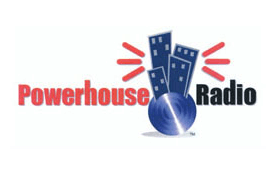-
0 André Gardner - Philly Radio Professional and Legend
- Radio
- by Kingsley H. Smith
- 08/14/2024
André Gardner (left) is a great broadcast friend. The photo of us was taken in August, 2023. In glory days, we shared the mic at three Philadelphia FM stations (WIFI 92, WSNI 104.5, and WZGO 106). André is a class act, a first class guy, and knows more about the class of The Beatles than just about anyone. Bonus: check out my Soul of the Beatles expose'. November 24 update: Radio is a tough business. André and 102.9 WMGK Philly (his most recent station) have parted ways. Not his choice. Super consolidation is a reality today across many jobs where employees are losing gigs because of downsizing and automation. Despite this, I congratulate André who in November became a member of the Broadcast Pioneers of Philadelphia Hall of Fame! Oh my, the irony of life! All the best my friend. Previous Post | Next Post
-
0 Classic Soul Radio Busts a Mobile Device Move
- Radio
- by Kingsley H. Smith
- 12/30/2011
Pandora’s move to mobile devices is no secret, as they have cornered a large share of the market. As a live365 broadcaster, I’ve waited for the opportunity to listen to the Powerhouse Radio classic soul (and more) stream from various wireless devices using live365’s platform. iPhone support came first. Now, Android has followed. The Beta version of the Android App (released in mid 2011) was not stable enough for me to recommend. The updated 2012 Android App is great. Having a 4g phone provides the best listening experience, although you may not have a constant 4g connection if travelling by car. On a recent 45 minute drive between downtown Washington, DC, and Baltimore, I tried the live365 App on a Droid Bionic using Verizon Wireless. The signal got dropped only once in downtown DC, and I can honestly say that it was a better listening experience than satellite radio’s frequent drop outs. If you are the driver, fiddling with a cell phone/smart phone during transit is something you don’t want to do. When listening this way, I try to set it (the phone), and forget it, until I want to turn the music off. I also recently tried listening to Powerhouse Radio on a Kindle Fire via the built in web browser. Because Kindle uses a much slower connection speed, I don’t yet recommend listening with this device. 2022 Update: Live365 shutdown in January, 2016 ending our stream along with every other Live365 broadcaster. Their service restarted in 2017. We did not rejoin their service. The photo above is a picture of Powerhouse Radio playing Sly & The Family Stone during the non-stop 24/7 stream on an Android phone. D̶o̶w̶n̶l̶o̶a̶d̶ ̶t̶h̶e̶ ̶i̶P̶h̶o̶n̶e̶,̶ ̶i̶P̶a̶d̶,̶ ̶a̶n̶d̶ ̶i̶P̶o̶d̶ ̶T̶o̶u̶c̶h̶ ̶o̶r̶ ̶A̶n̶d̶r̶o̶i̶d̶ ̶A̶p̶p̶ ̶f̶o̶r̶ ̶l̶i̶v̶e̶3̶6̶5̶,̶ ̶f̶r̶o̶m̶ ̶i̶T̶u̶n̶e̶s̶ ̶o̶r̶ ̶t̶h̶e̶ ̶A̶n̶d̶r̶o̶i̶d̶ ̶M̶a̶r̶k̶e̶t̶,̶ ̶(̶G̶o̶o̶g̶l̶e̶ ̶P̶l̶a̶y̶)̶,̶ ̶a̶n̶d̶ ̶t̶u̶n̶e̶ ̶u̶s̶ ̶i̶n̶ ̶o̶n̶ ̶y̶o̶u̶r̶ ̶p̶h̶o̶n̶e̶!̶ Previous Post | Next Post
-
0 The Secret Life of Sly Stone
- Radio
- by Kingsley H. Smith
- 04/30/2006
The first time I saw Sly & The Family Stone was at New York City's world famous Apollo Theater. Comedian Red Foxx opened the show. I was a young teen, not expecting the blue language of Foxx, or the audience disapproval of Sly. You see, Sly's concept of interracial funk was loud, in your face, and way ahead of it's time. The second time I caught his show, a couple of weeks later, downtown at Bill Graham's Fillmore East, same Sly, but the accepting Greenwich Village audience had big fun...and danced to the music. Sly Stone, pictured here, performing at the 2006 Grammy Awards, is an icon. You've probably heard all of the Sly Stone urban legends, most of them true, about his legendary shows, his no shows, and his charismatic showmanship. A big part of the secret life of Sly Stone comes from what he learned as a young genius producer/arranger in San Francisco. He produced tracks for Grace Slick, The Beau Brummels, and Bobby Freeman. Sly wrote "The Swim," a 1964 hit for Freeman. Prior to the national break out of Sly & The Family Stone, record producer Sylvester Stewart, also known as Sly, hosted a radio show at KSOL in San Francisco. He used a deeper, mellow speaking voice, especially later in his on-air career. This voice was a few octaves lower than the familiar sound of his singing. Always an innovator, Sly pioneered live dedications, and signed off his radio program each night by playing the piano. According to T. Watts, Sly had a program segment called, "the integration record." This was an affirmative action slot for "white" rock n' rollers every night at 11pm. Watts says for several months during one stretch, Sly's "integration record" song was "Satisfaction" by the Rolling Stones. You may have been lucky enough to hear Sly Stone DJ. I once caught him in New York City, filling in for the legendary Frankie Crocker at WMCA. I regret I didn't record his show, for it was a classic performance. Sly was an excellent radio DJ. I'd love to hear him back behind the microphone. I'm sure he did other fill-in guest appearances in other USA cities, once Sly & The Family Stone became famous. Here's more about Sly on the radio from Dave Billeci at reelradio.com. "He sang in the Saint Beulah Church of God in Christ choir and recorded gospel music at the age of 4, years before attending the Chris Borden School of Broadcasting in San Francisco." "After graduating in October 1964, Sly was hired by KSOL. He was eventually placed on the night shift Monday through Saturday." "He was very popular with the KSOL audience. In early 1967, Sly moved from the night shift to afternoon drive until his departure in June 1967." By the way, if you want to hear airchecks of the secret life of Sly Stone, (an aircheck is a recording from the radio featuring DJ chatter, with most of the music removed), you can find several places online, including Airchexx.com, with recordings of Sly Stone at KSOL in San Francisco, back in the day... Your browser does not support the audio element. Dave Billeci continues: "During those two and a half years at KSOL, Sly gradually made a transition from an imitator to an innovator." "He might have been considered the Bay Area's first "shock jock." Dave adds that eventually, Sly "wanted to devote his (full) attention to the group he had just formed: The Family Stone." "In October 1967, Sly decided to get back into radio and was hired by KSOL's competitor across the bay, KDIA. He only worked there for about two months before signing a recording contract with Columbia records." The rest, as they say, is history. Previous Post | Next Post





